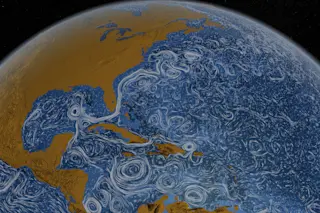In an article in the journal Science this week, University of California-Irvine professor of engineering James Famiglietti and NASA hydrologist Matthew Rodell make the case for improving the GRACE satellite program, which has been critical to understanding global water supplies.
GRACE (Gravity Recovery and Climate Experiment) has given us so much, and while scheduled for a 2017 relaunch, these water wonks argue that there are tweaks that could make it an even better water management tool. More compelling data visualization would have to be logical outcome of improvements too, right?
The GRACE mission is a joint effort between NASA and the German Aerospace Center that maps variations in Earth’s gravity field. Two identical satellite-carrying spacecraft orbit the planet about 140 miles apart. When the two are pulled away from each other, even just slightly, it means they have entered an area of slightly stronger gravity. The change could be imperceptible ...














